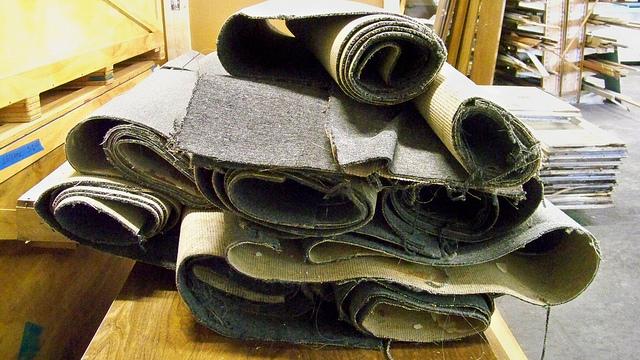What To Do With Commercial Building's Old Carpets

Carpets are great! In fact we need them not only for the cosiness they provide, but for their great role in maintaining us healthy. For instance, did you know that in homes without carpets, people get sick four times more. I don't know about you, but before I started working for a north Sydney carpet cleaning company, I thought it is the opposite. I thought carpets are the evil source of allergies, mites and bacteria. It turns out without them dust particles, mites, bacteria and dirt circulate the air, while where there is a carpet, these are trapped within its fibres.
In other words, carpets are important as they act as the filters of our home, helping us to breathe cleaner air. For this and many other reasons the large variety of carpets and rugs finds its place in the homes and offices of people across the world. There hardly is a home or office without a carpet. What happens with the piles of carpeting that is no longer in use though?
I don't mean to scare you, but here is a pretty disturbing picture:
There are are 5 billion pounds of carpeting (2 267 961 850 kg) in commercial and residential buildings across the United States alone. All this eventually ends up in landfills and only 3% gets recycled. What's the big deal you might say? Well a single synthetic carpet takes more than 50 years to decompose completely.
Now if you have a large commercial building with a lot of floors and offices covered in carpet and you are wondering what to do once you start replacing it, consider recycling. All you need to do for your carpet to be recycled is to give it a thorough cleaning and to drive it to the nearest recycling depot. There it will be transferred to the appropriate place.
Many businesses are nowadays considering carpet recycling and some even re-use their old carpets. For instance, Vegas casinos are repurposing their carpets and make them into carpet padding.
The process of recycling itself, even though worthwhile, is a bit lenghty.
Firstly all carpeting has to be thoroughly cleaned, inspected and sorted according to the material it's made of.
The second step of the recycling process includes sizing the carpet down. Big chunky carpets, need to be sized down to a more manageable pieces to ease the process. Only after that, the real recycling begins. The next step include separating the loops from the carpet backing. The collected "fluff" is now being processed and sanitized. The separated and sanitised carpet loops are being sewn together with the help of a giant "sewing machine". After the sewing process, the loops move on to be melted together with heat.



